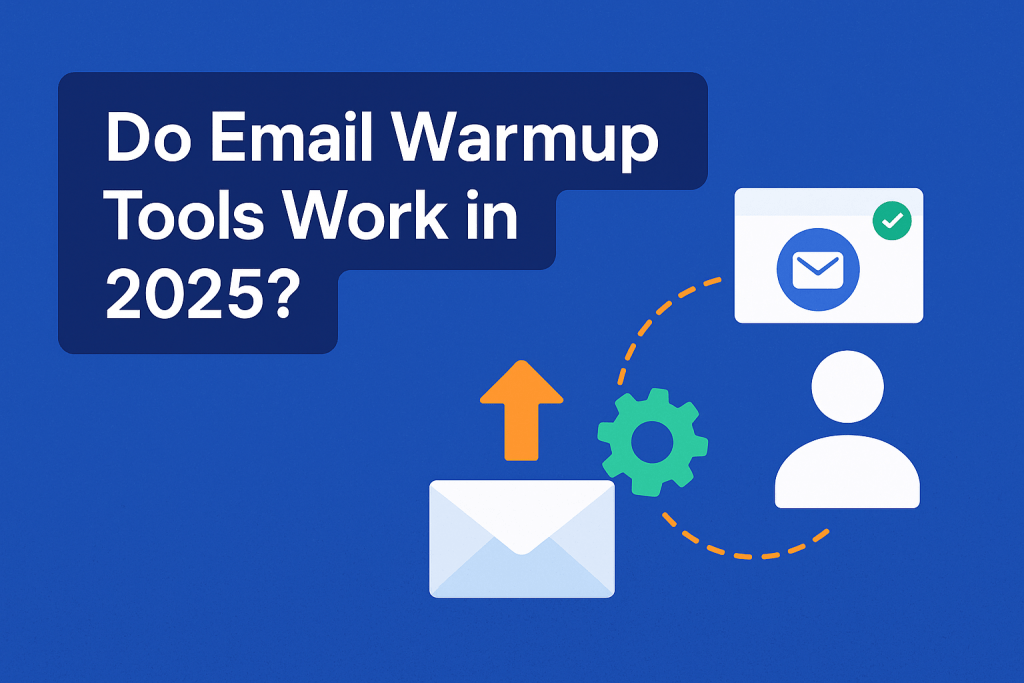Do Email Warmup Tools Work in 2025?
In the ever-evolving world of email deliverability, one question has become increasingly relevant in 2025: Do email warmup tools still work? Once seen as a breakthrough for improving inbox placement, warmup tools are now under scrutiny for their actual effectiveness and long-term impact on domain reputation—especially with changes in how mailbox providers like Google and Microsoft assess sender credibility.
How Email Warmup Tools Work
Email warmup tools work by automating interactions between mailboxes—typically those hosted on Google Workspace or Microsoft 365. Once subscribed, your mailbox is added to a warmup network where it begins sending and receiving emails with other participating accounts. These tools simulate human-like behaviors such as opening emails, replying, marking them as important, and even moving them out of the spam folder into the inbox. The theory is simple: increased engagement signals improved sender reputation.
Why This Worked… in the Past
When these tools first emerged, this method of simulating organic engagement gave many cold emailers a tactical advantage. At the time, mailbox providers were less sophisticated in detecting artificial interactions, and the volume of warmup users was relatively low—making it easier to “game” reputation systems.
But 2025 isn’t 2020.
What’s Changing?
The effectiveness of warmup tools has sharply declined over the last year or two. Users are increasingly reporting that:
- There’s no measurable improvement in open rates.
- Google Postmaster Tools show no significant lift in domain or IP reputation.
So, what changed?
1. Google Knows What You’re Doing 🧠
Most warmup tools rely on automated openers hosted on cloud services like Heroku or AWS. These use the same IP addresses or predictable patterns when accessing your mailbox via API or IMAP. It’s relatively easy for Google’s sophisticated detection systems to identify these interactions as non-human—and ignore them entirely from reputation calculations.
Google’s response 😉:
“This mailbox shows bot-like activity. Ignore it for reputation signals.”
2. Template Overload
Warmup emails often follow repetitive templates sent across hundreds or thousands of mailboxes. With the rise of AI and advanced content detection, it’s no surprise that mailbox providers can now classify this content as inorganic or even spammy. Instead of helping your domain reputation, it could be flagging your sending behavior as automated.
3. Misleading Metrics = False Confidence
Many warmup platforms show “improved” deliverability through biased seed list tests—usually targeting their own controlled mailboxes. While these internal metrics may show progress, they don’t translate into success in real-world cold email campaigns. The disconnect between warmup results and actual inbox performance is growing wider.
“Over the last few months, we at Postbox Services tested nearly all major warmup tools available in the market—and unfortunately, none of them demonstrated any meaningful improvements in deliverability or reputation.”
Should You Still Use Warmup Tools?
We’re not saying you should ditch warmup tools entirely—but you shouldn’t use them blindly either.
Here’s what you should do instead:
- Track objective metrics: If your domain reputation in Google Postmaster Tools improves and real campaign open rates are rising, you might be benefiting from a specific warmup tool.
- Test externally: Run seed tests with independent tools like GlockApps (or to your own list of 5 Google workspace and 5 Microsoft365 email addresses) to validate real deliverability.
- Stop if it’s not working: If you’re not seeing measurable improvement, don’t keep paying for a tool that may be doing more harm than good.
Conclusion
In 2025, email warmup tools are not the silver bullet they once appeared to be. While they can still serve a purpose in specific cases, overreliance on artificial engagement is unlikely to yield meaningful improvements—and could even backfire.
Approach warmup tools with caution, skepticism, and measurable expectations.




